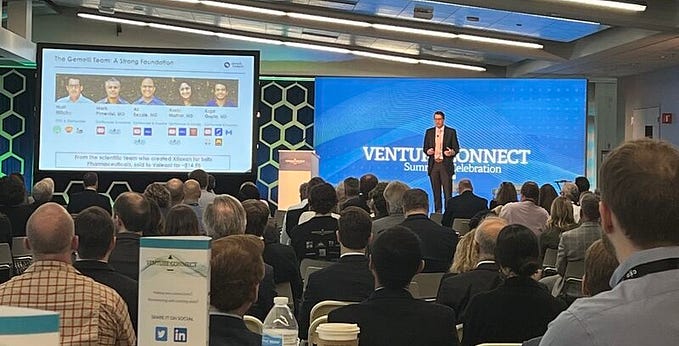Some of the wealthy have played by a different set of rules since the 1930’s, most had no idea they could, & 93% of society was left out…
If you are not wealthy (‘accredited investor’), your opportunity to put your money in private companies you believe could succeed was virtually illegal from 1930 to 2015.
Let me simplify why this is important.
Accredited investors have access to a world of everyday private companies in our backyard while they are early. In other words, private companies are NOT listed on the stock market.
Impact? Uber became available on the stock market (IPO’d) at a $82.4B valuation. As of 1/12/2022, they trade at a $83.5B valuation. Who owned the wealth in the below chart for the various funding rounds? Accredited investors. Why, because laws in the 1930’s gave them access.
How impactful is this? Uber is one of the best performing private market companies of all time and $1K invested in Uber’s 1st round was worth an estimated $1.4M on exit. However, Uber is not alone.
Early investments in AirBnB, Notion, Redhat, and just look at companies on the stock market you recognize all started as private companies. They required early investments. Who shares in the wealth when they list on the stock market?
- 1st the early accredited investors, and
- Then the team who built the companies, or
- Sometimes both of those groups split the returns equally with their ownership without preference over the investors (but that’s beyond the scope of this article).
Investments in these companies are typically done via a high growth Private Fund (aka ‘venture capital’). The average annualized returns of venture capital is 27%. Private Fund or fund is just a fancy word for pooling capital together into an entity such as an LLC or Limited Partnership fund which then invests in 1 or more companies.
But it doesn’t stop at just the high growth tech and device companies…
You may have heard about baby boomers retiring and even may have come across a Youtube ad or 2 to buy existing companies. That’s an example of another subset of the types of companies private funds target, called ‘Private Equity’ or ‘PE. — which is not to be confused with your PE class back in school…though the rush of private equity may feel like a sporting event.
In private equity, Managers or ‘General Partners’ source ‘deals’ (aka opportunities to invest in existing revenue generating companies ‘Operating Businesses’ such as a doctor’s office business or franchise, HVAC company, or other). Then the private equity fund manager buys out the business and deploys a plan to operate the business more efficiently (sometimes that involves firing employees — not all do this, but it is a common practice).
Goal? Get to the top end of this return chart.

I know, this is going to start sounding like a broken record, but guess what?
It doesn’t stop at Operating Businesses…
What about Commercial Real Estate (CRE) such as apartments, leases to manufacturing companies for their space, or your local coffee shop?

Many of those CRE investments are returning 12% to 25% per year and while no-one can formally state the ‘risk profile,’ data shows the average risk profile of high quality apartments and similar commercial real estate is lower than that of bonds. That’s why so many wealthy people invest in real estate.
Who has access? You guessed it. Accredited investors.
Rules created in the 1930’s don’t allow ~93% of the US population to invest in opportunities like Uber until they hit the stock market due to this ‘accredited investor’ arbitrary wealth status. These opportunities are not ‘traded’ and liquid like the stock market. They are ‘invested’ in for the long term potential with limited access to sell along the way and if they ever generate a return (most fail losing investor money), hold times of 7 to 10 years are not uncommon.
If you don’t have $1M in net assets (not including your primary house) or make $200K/yr (or $300K if married), then sorry, you’re out of the ‘accredited investor’ club.
Funny enough, 90% of accredited investors don’t even know they have this elevated access
Where would they have discovered it? ‘Accredited only’ opportunities WERE NOT PERMITTED to be publicly solicited until 2012. So they were shared only with those in the know.
Impact to households and families
The average return of the stock market has been ~10% per year for the past 100 years.
So 93% of the population has access to the stock market returning ~10%/yr on average vs ~7% of the population has access to investments paying MORE for 80+ years.
That’s largely why we have a wealth gap.
It’s important to share that there was a reason for these laws. Most early-stage companies (aka ‘startups’ like Uber, AirBnB, etc. before they are household names) fail meaning it’s very likely to lose most if not all your money made in individual companies. That’s why professional investors such as Angels or VCs will diversify across 30, 40, or more startups at at time.
However, it’s shocking that in America we had laws from the 1930’s lasting until 2016 which restricted the opportunity to take this risk based on an arbitrary wealth status.
More importantly, I can’t even fathom all of the missed opportunity for founders of these startups & other private businesses to leverage a broader network of people to propel sales, marketing, connections, & innovation.
Now, everyone has the opportunity
That’s why I’m excited that a leveler playing field started in 2015 with the passage of ‘Reg A+’ and then Reg CF in 2016 (collectively, ‘Investment Crowdfunding’). They are fancy terms which allow pretty much any company to raise up to $75M and $5M from anyone. They both drive the #FutureEconomy which:
- creates the opportunity for entrepreneurs to seek capital from anyone,
- encourage those people to help them grow their companies, and
- share in any returns created together
The risks of investing early haven’t changed, but the opportunity for who wants to invest in creating the next 80+ years of companies has.
As of the end of 2021, $33B ($33,000,000,000) in value has been created on $1.1B invested across 4800+ companies, creating nearly 100K jobs. It’s expected to hit $2B in 2022. It’s here to stay. Just imagine what we can create together.
Disclaimer: This is educational content and not a solicitation to invest.








